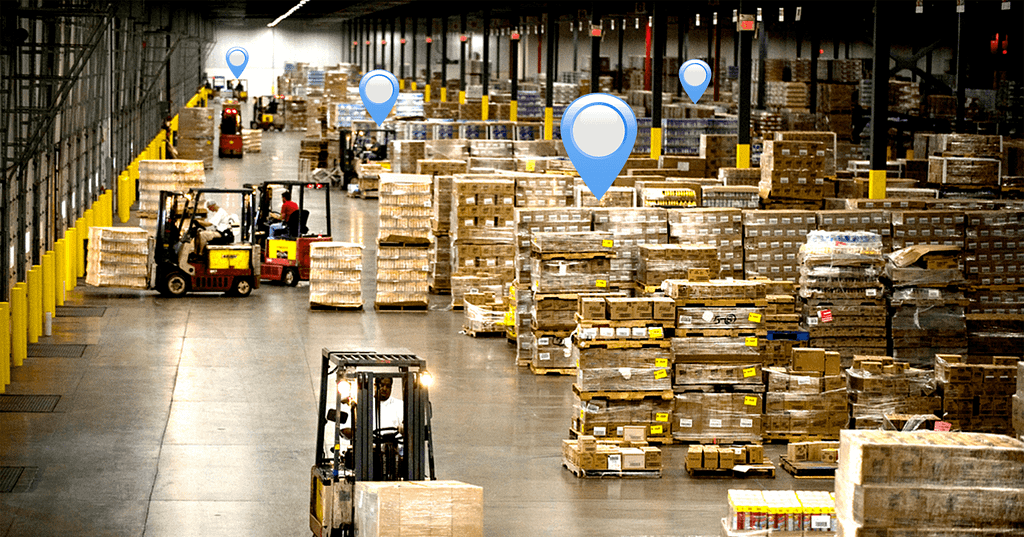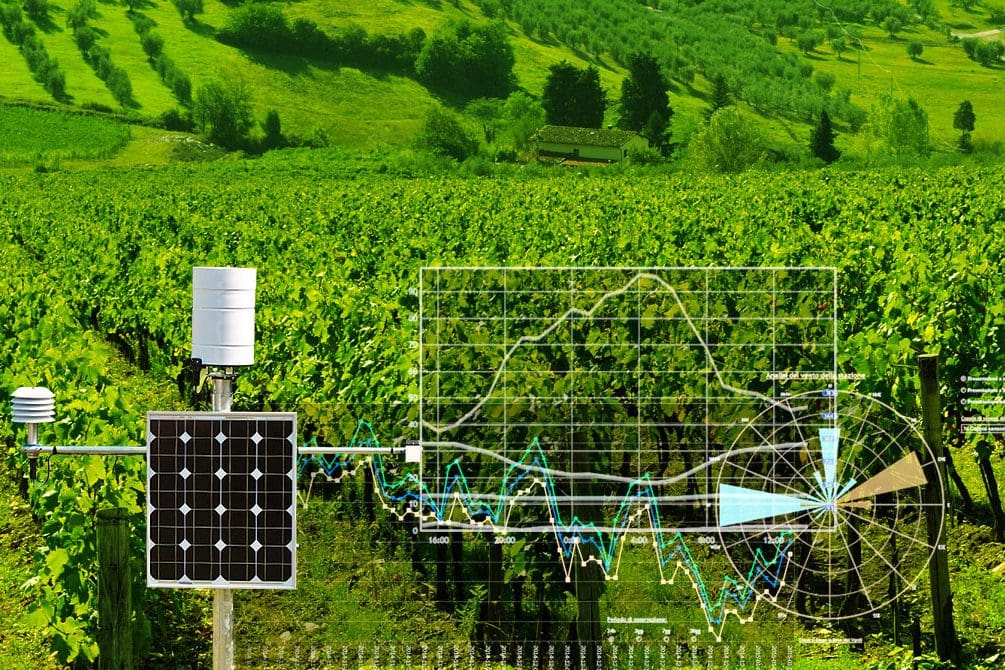The health of our planet is of paramount importance, and in an age of increasing environmental concerns, monitoring and safeguarding our natural surroundings have never been more critical. Environmental monitoring systems play a pivotal role in this endeavor, providing essential data and insights necessary for informed decision-making.
These systems utilize cutting-edge, IoT technology to track various environmental parameters, helping us understand and address the challenges posed by climate change, pollution, and other ecological threats.
In this article, we want to explore the significance of environmental monitoring systems, their components, and the various business applications that make them indispensable tools for preserving our environment.

What are environmental monitoring systems?
Environmental monitoring systems are indispensable tools in the quest for comprehension and effective cooperation with the environment.
These systems collect a wealth of data on an array of critical environmental parameters. The information they gather spans a multifaceted spectrum, including but not limited to air quality, water quality, soil conditions, and various climate variables.
Air quality monitoring stations, for instance, continuously sample the atmosphere for pollutants such as particulate matter, nitrogen dioxide, sulfur dioxide, and ozone. By scrutinizing these pollutants’ concentrations and their fluctuations, we can gain insights into the air’s health and potential risks to human and ecosystem well-being.
Likewise, water quality monitoring systems are instrumental in assessing the health of our aquatic ecosystems.
They monitor parameters like pH levels, dissolved oxygen, temperature, and the presence of contaminants such as heavy metals and pesticides. These data points enable us to identify pollution sources, assess the suitability of water for various uses, and implement measures to safeguard aquatic life.
As for soil monitoring, pivotal to the agricultural sector, they delve into the ground beneath our feet, measuring parameters like moisture content, nutrient levels, and the presence of pollutants. This data is crucial for sustainable agriculture, land-use planning, and identifying areas where soil remediation is necessary.
On a grand and complex scale, climate monitoring encompasses an extensive network of instruments that track variables like temperature, humidity, precipitation, wind patterns, and greenhouse gas concentrations.

Components of environmental monitoring systems
To do all that intricate work, environmental monitoring systems require many components that work together to collect, store, and analyze data related to specific environmental parameters.
Sensors
Sensors serve as the foundational elements of most environmental monitoring systems. They are designed to measure specific environmental parameters and provide valuable data for analysis.
Environmental sensors come in a wide variety – ranging from basic instruments like thermometers and pH meters to advanced tools such as spectrometers, gas analyzers, and more.
These sensors are strategically placed at locations of interest, and they continuously or periodically collect data in real time. For example, air quality sensors measure pollutants like CO2 and PM2.5, while water quality sensors assess parameters such as turbidity and dissolved oxygen levels.
Data loggers
Data loggers are indispensable components that work hand-in-hand with sensors. They are responsible for recording and storing the data gathered by sensors.
Data loggers come in diverse forms, including standalone units, which are ideal for portable or remote monitoring applications, and integrated systems, which are designed for more complex monitoring setups.
These devices ensure that the data collected is accurately archived for future analysis, providing a historical record of environmental conditions over time.
Communication networks
Environmental monitoring systems often involve sensors placed in remote or distributed locations. Communication networks are essential for transmitting data from these sensors to central databases or control centers.
These networks can be wired or wireless, depending on the specific requirements and constraints of the monitoring environment. Wired networks may include Ethernet or fiber optic connections, while wireless options encompass technologies like Wi-Fi, cellular networks, or even satellite communications.
The choice of communication network is critical to ensuring that data is accessible and can be relayed in real-time or near-real-time from virtually anywhere.
Data analysis software
Collecting data is only the first step of the entire process. Making sense of all the data requires specialized data analysis software. This software plays a pivotal role in converting raw data into meaningful insights.
It employs algorithms and statistical techniques to identify trends, anomalies, and potential environmental issues. Advanced data analysis tools can provide predictive capabilities, enabling timely responses to environmental changes.
For example, meteorological data analysis software can help predict severe weather events, while ecological monitoring software can identify changes in species behavior or habitat conditions.
Visualization and reporting tools
Finally, to communicate findings effectively, environmental monitoring systems often include visualization and reporting tools.
These tools create user-friendly graphical representations of data – such as charts, graphs, and maps – making it easier for scientists, policymakers, and the public to understand and interpret the information.
Reporting features also allow for the creation of comprehensive reports that can be shared with stakeholders, regulatory authorities, or the public to promote transparency and informed decision-making.

Applications of environmental monitoring systems
Environmental monitoring systems have many applications throughout the entire industry. In fact, nowadays, some companies rely heavily on this technology to track, manage, and mitigate their assets and workspaces.
Environmental monitoring systems can provide companies with real-time insights into their environmental impact. These systems use sensors and data analytics to monitor various aspects of the environment, such as air quality, water usage, energy consumption, and waste production.
By continuously collecting and analyzing data, businesses can pinpoint areas where they can reduce their environmental footprint. For instance, a manufacturing company can monitor emissions and adjust production processes to reduce pollution levels.
In an increasingly regulated world, staying compliant with environmental laws and regulations is crucial. Environmental monitoring systems help companies maintain compliance by providing accurate and up-to-date data on their environmental performance.
This enables proactive measures to ensure that operations adhere to local, national, and international environmental standards, reducing the risk of fines and legal consequences.
But perhaps the most significant benefit of environmental monitoring systems is their ability to optimize energy usage.
Companies can track energy consumption in real time, identify inefficiencies, and implement measures to reduce energy waste. By doing so, businesses can lower their operational costs while simultaneously reducing their carbon emissions, a win-win scenario for both the environment and the bottom line.
Resource conservation is a vital component of sustainable growth, another area in which environmental monitoring systems help companies manage their resource usage efficiently.
For instance, agriculture businesses can monitor soil moisture levels to optimize irrigation, reducing water wastage. In the hospitality industry, hotels can use these systems to manage lighting and heating, further reducing energy consumption.
Data-driven decision-making is a hallmark of modern business, and environmental monitoring systems provide valuable data for informed choices.
By analyzing environmental data, companies can identify trends, set targets, and measure progress toward sustainability goals. This information enables executives to make strategic decisions that align with environmental responsibility and long-term profitability.

Implement environmental monitoring systems in your company today
As you can see, the impact and importance of environmental monitoring systems cannot be overstated. Implementing these systems in your company can be the game changer you’ve been looking for to increase your results and productivity.
We here at Datanet IoT know that firsthand – as our environmental tracking solutions have helped many companies reach new heights. So get in contact with us today and take the first steps in implementing this revolutionary technology and push your company towards a new future.




